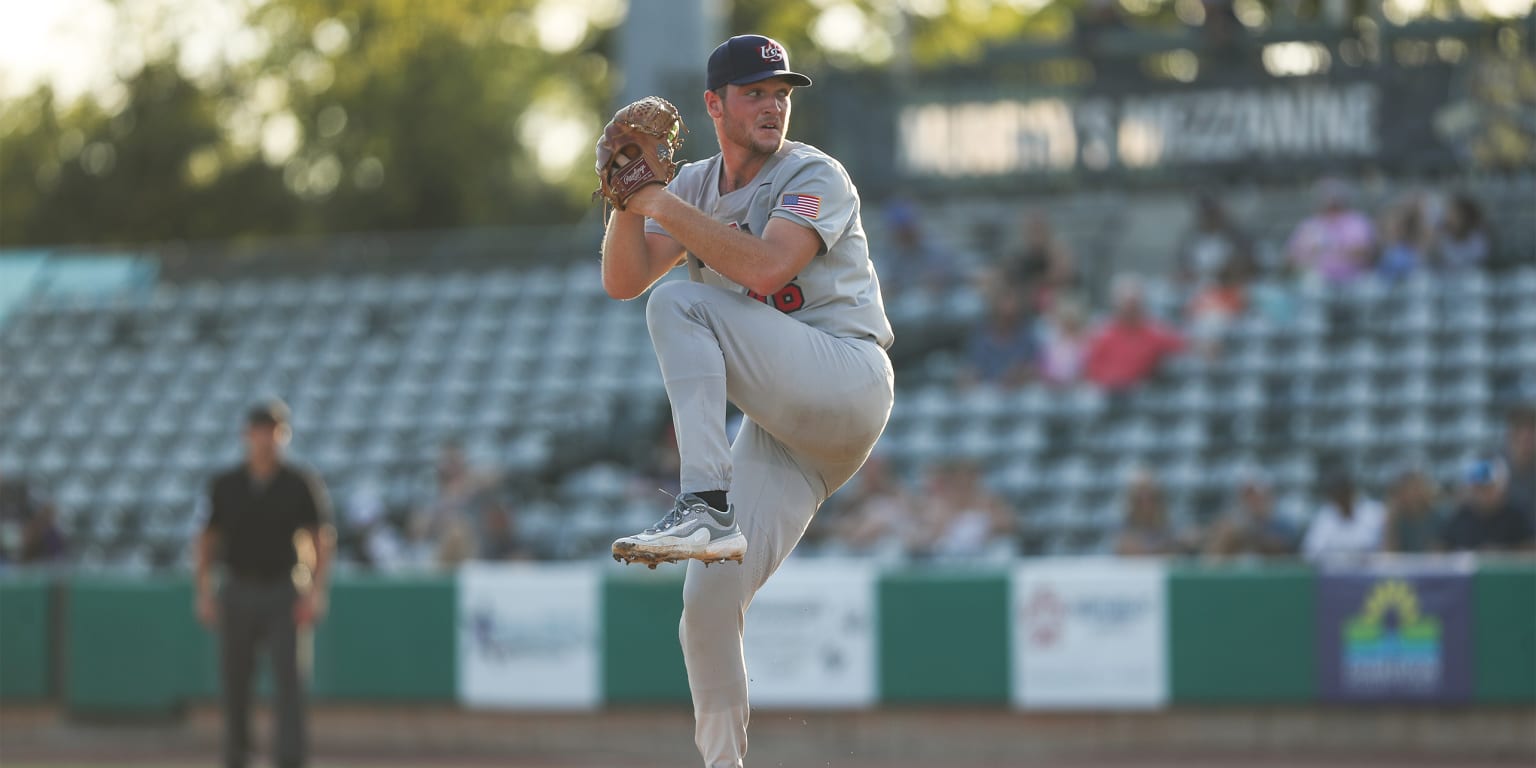NFL
Five Thoughts on Justin Jefferson’s New Contract With the Vikings

Justin Jefferson is now the highest paid nonquarterback in NFL history. This is always where the Minnesota Vikings’ organization was going to have to go in order to secure him for the long term, and to its credit, the team arrived there before public acrimony of a training camp holdout. We’ll get to that and much more below.
Here are a handful of thoughts on the deal.
1. Did Jefferson utilize the full extent of his leverage?
The Vikings have been one of the few NFL teams that have doled out fully guaranteed contracts in the past. Jefferson has an excellent cash flow structure in this deal, with $125.73 million coming to him over the four years of the contract, which he will almost certainly see. However, I wonder whether it was worth tightening the screws and forcing the Vikings to fully guarantee—and not just practically guarantee—every dollar of the four years of that extension.
Think about it: The Vikings are through the draft and have no other option to acquire a talented wide receiver for this season, save for the scraps still on the free-agent market or a one-year rental trade for a veteran about to hit the market next year. The Vikings have a rookie quarterback, J.J. McCarthy, who will greatly benefit from having the rangiest alpha-dog wide receiver in the NFL, a player who fights for every pass and makes miracles happen when going up for 50-50 balls. This is undoubtedly a high-pressure situation for the general manager, Kwesi Adofo-Mensah, who has had his ups and downs thus far during his tenure and was essentially backed into a corner here. Jefferson making it to camp without a new deal would have been catastrophic. The Vikings were aware of this. While I don’t begrudge Jefferson for wanting to get a deal done that checks most of the boxes, there is the matter of a rising tide lifting all boats. We have the ability to both love and appreciate where we work while simultaneously bludgeoning them at the bargaining table.
Again, this is a very good deal. The guy got $88 million due at signing, which is incredible. And perhaps the idea of his getting a fully guaranteed contract is just something us dreamers kick around to fill the void of silence during this time of year.
2. The Cincinnati Bengals and Dallas Cowboys have some work to do
Much has been made about the Cowboys’ passivity this offseason, but I think we’ve reached a point where it’s fair to wonder what on earth is happening there. Jefferson is clearly the best receiver in the NFL, and Dallas allowed CeeDee Lamb’s contract to go unsigned (or perhaps did not adequately push for it while Lamb waited for Jefferson to sign and up his asking price) to the point where Lamb is going to be able to touch Jefferson-level money. Now, statistically, Lamb is an interesting case because he has more games than Jefferson (66 to 60), as well as more receptions (395 to 392) and receiving touchdowns (32 to 30), and is more involved in both the running game and on special teams, which could have unique implications given the alterations to the kickoff rule. Lamb has been to the same number of Pro Bowls, and Jefferson has just one more first-team All-Pro season. However, if you were to ask a panel of wide receivers coaches around the NFL, I would guess most of them would prefer to have Jefferson based on raw talent alone. To say that Lamb should accept anything less than Jefferson money would be ludicrous. If second- and third-tier quarterbacks can work their way into the rotation of leapfrogging the highest-paid player at the position, Lamb absolutely has precedent here.
The Bengals are in a different situation because Ja’Marr Chase is a year behind Jefferson. If the Bengals organization gets the sense that Chase won’t hold out, it may be worth it for the team to kick this deal along, given that no other receiver is going to dramatically reset the market over the next 365 days. The Bengals still have the fourth year of Chase’s contract and the fifth-year option, and while I am always an advocate for paying players early and often, one has to consider all factors. For example, the Philadelphia Eagles and Miami Dolphins were brilliant in getting ahead of the Jefferson contract situation with the A.J. Brown, Devonta Smith and Jaylen Waddle deals, because those contracts would have been pricier after the Jefferson deal. Chase is, I think, the second-best wide receiver in the NFL. He was always going to wait on Jefferson’s deal and now has a framework with which to operate. That framework isn’t going anywhere because, outside of Lamb possibly increasing the APY (average per year) price on the deal by $1 million at most, not much is going to change. There is no other best receiver in the NFL. Cincinnati, if the team so chooses, could wait until the bitter end and give itself the option to evaluate Chase’s health and growth potential after one more year.
3. This deal takes a lot of pressure off Kevin O’Connell and J.J. McCarthy
Finances speak volumes in an NFL locker room, and while McCarthy learns the ropes, Jefferson has now become immortalized as the de facto leader of this team. I go back to last year and think of how incredible it was that Jefferson actually came back and played, without the security of a long-term deal, through a lower-body soft tissue injury when the Vikings were kind-of, sort-of competing for a playoff spot with a rotating cast of backup quarterbacks. That earns a lot of respect and now that respect has been cemented in the form of a massive paycheck.
This is a long way of saying that Jefferson is the sort of person you want leading a locker room anyway, and while McCarthy learns how to become a professional, there won’t exist this massive void when it comes to the setting and maintenance of emotional energy thanks to the team’s having lost Kirk Cousins. Of course, having Jefferson on the field makes McCarthy a better player instantly, and the contract protects Jefferson from having his long-term value impacted should McCarthy struggle early and fail to help Jefferson deliver the kind of numbers commensurate with being the most valuable nonquarterback in the NFL. This kind of animosity-free environment ensures that the Vikings are—at least in terms of factors ownership can control—on a level emotional plane to start the year.
4. The Jefferson deal will be a bellwether
The NFL persists upon a series of parallel trends, and its 32 member clubs are made up of a small and homogenous group of executives and coaches from an even smaller number of tribes who weigh these trends in slightly different fashions. As a result, we have the Vikings giving Jefferson $35 million per season and, soon, we’ll have the Cowboys giving Lamb something similar and the Bengals giving Chase something close to that as well. We’ll have a good sample size (especially if we include the Davante Adams deal and the big-but-not-really-big Tyreek Hill deal) as to the ultimate value in paying these players versus flipping them for assets and simply resetting the contractual clock with the font of talent that continuously rises up from the collegiate ranks. The wide receiver group has yielded at least two legitimate star players per class since 2020, and even some of the picks we’d consider a swing and miss from that time still held value relative to their draft slot.
So, imagine a general manager who inherits the next Justin Jefferson. How will what is happening now inform his or her decision-making processes down the line? Adams was spectacular in Las Vegas, though it ultimately mattered little. Hill has been fabulous in Miami, but there are late-season health concerns, and the Dolphins have been clearly outmatched in both of their first-round playoff exits. I’m not making a QB Winz argument, but I am asking whether there’s a conversation to be had about the value of wide receivers on the open market and what kind of draft equity they can return versus the long-term value of keeping a wide receiver. I think about this a lot when considering the fact that the Rams found two scheme-perfect superstars outside of the first round, less because they are geniuses and more because everyone in the entire organization has an understanding of what they are looking for. Isn’t direct scheme fit, affordability and the creation of that assembly line more valuable than a singular talent who is going to cost (in the case of Jefferson and Cooper Kupp, let’s say) roughly $10 million more? That $10 million can be allocated to two middle-class linchpin pieces, or added into the fold for a generational cornerback or pass-rushing prospect who happens to hit the open market.
Could there be an intellectual underpinning now to the conversation we had about the New England Patriots many years ago, and I suppose the one we’re having about the Kansas City Chiefs now (even though Rob Gronkowski and Travis Kelce are incredible Hall of Fame talents and doubled the value of a normal receiver for about half the price)? That, when it comes to building sustainable success, wide receiver simply isn’t that big a piece of the puzzle?
My guess is that there will be a sweet spot developed and that the booming receiver market will eventually settle. I think that the Devonta Smiths of the world will represent the right combination of value and scheme fit, while players asking for more money will be shopped to desperate teams looking to make a splash to salvage season ticket numbers or to save a reeling coach or general manager.
5. A few additional, more scattered thoughts …
• Former colleague and good friend Jonathan Jones at CBS made a fantastic point about the Cleveland Browns immediately following the news of the Jefferson deal. Getting Jerry Jeudy and Amari Cooper for mid-round picks feels masterful given the amount of money these teams have doled out. Now, did Cleveland put itself in that position with the Deshaun Watson contract? Certainly. However, the Browns have been among the best in the NFL at navigating the wide receiver market and importing premium talent for less.
• To that batch, I would obviously add the Chicago Bears, who acquired DJ Moore’s contract, which was signed just before the boon created by the Adams and Hill deals. Moore is the 18th highest-paid receiver in the NFL in terms of APY, and has another year at $16.5 million remaining. Hammering players from any positional class just before that class is fundamentally reshaped by a super-deal is a sound business strategy.
• Speaking of Hill, if I were him, I wouldn’t play a down without a short-term contract that approaches Jefferson’s APY with most of it guaranteed. Hill is as integral to his team as any nonquarterback in the NFL at this moment. His time for hardball is now.
• We should all be very curious as to how San Francisco 49ers first-round pick Ricky Pearsall plays this year, given that the 49ers have to make major financial decisions on both Deebo Samuel and Brandon Aiyuk. The 49ers have a jam-packed wide receiver depth chart at the moment, especially when you include Christian McCaffrey’s target share. Aiyuk will not reset the market but will be more expensive by virtue of the Jefferson deal. The same can be said of Samuel, even if Samuel is a different kind of receiver who is best when targets are manufactured for him. What kind of value do they place on each player and their own unique skill sets? Can Pearsall get enough snaps to justify making one of these other players expendable either before the trade deadline or at season’s end?


)






